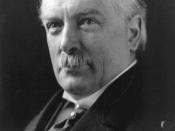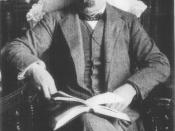The First World War was 'Total' in nature and was the first traumatic war Great Britain experienced. One of the features of the war leading up to Britain's involvement was the use of propaganda posters to divert all attention to the War from the home front. The home front was defined as the active support of a nation for its military at war from the homes of the civilian population. One element of the home front was food rationing. Due to the scarcity of food, gas, sugar, chocolate, rubber and other goods a new rationing system was initiated which ensured a regular and sufficient food supply. Even though there was degree of scarcity this was established in order to help out the home front economically so that they wouldn't run out of resources. Another element of the Home Front during World War I occurred in the British Shell Crisis during 1915 when Lloyd George was appointed, recognition that the whole economy would have to be geared into war if the Allies were to prevail on the Western Front.
Another essential part of the Home Front was the use of posters to influence peoples' decisions on what to eat, what occupations to take (Women were used as nurses and in munitions factories), and to change the attitude of support towards the war effort. This began on August 1914 where the sudden involvement of Britain was called upon to defend Belgium and counter German aggression. Even though there were many people who wanted war there were also those who opposed it. They realised that the government had control over all aspects of their daily lives and it lead many people to distrust politicians and officials. This continued on till May 1915 and the 'Shell Scandal' made people realise that the progress of...



Good
Unfortunately no graphs, but easy to understand.
0 out of 0 people found this comment useful.